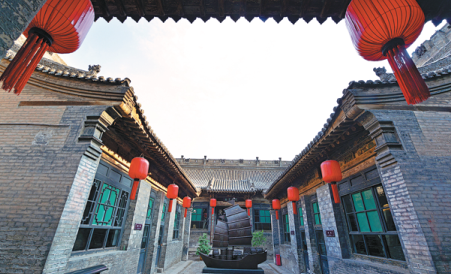Zhaoyu aims to reignite Shanxi merchants' glory

Exhibits at the Jinshang Tea Firms Museum show how tea products were transported centuries ago. [Photo by Zhang Jiong for China Daily]
The Jinshang Tea Firms Museum is based in the former headquarters of Changyuchuan. Owned by the Qu family, Changyuchuan was among the oldest and largest tea-trading businesses in Qixian county.
On display in the museum are old account ledgers, documents and tea bricks as well as equipment for storage and transportation.
"Seeing all the exhibits, I understand the enterprising spirit of the Jinshang merchants," said Guo Jianghong, a tourist from Tianjin.
According to local records made during the Qing Dynasty (1644-1911), the merchants in Qixian established operations throughout tea production areas in China and many regions of Russia and other Asian and European countries. The booming tea trade made Qixian a center for the Jinshang merchants in Shanxi and a hub for China's foreign trade.
In 1994, Qixian was approved by the State Council as a Chinese historical and cultural city. The old streets of Zhaoyu were recognized by the then Ministry of Culture as Chinese historical and cultural streets.
There are 33 sites related to the ancient tea trade in Qixian, among which, 13 sites are on a China-recommended candidate list for the UNESCO World Cultural Heritage sites.
In Qixian's new development plan to build a tea cultural hub, Zhaoyu, as well as the entire county, will be positioned as a center for tea trade and a destination for tourism.
In its role as a tea trade center, the authorities in Qixian and Shanxi are expected to highlight operations in both traditional teas and emerging herbal teas.



